Willie/William John Richards Working life

Portsmouth ca. 1870 - ca. 1920
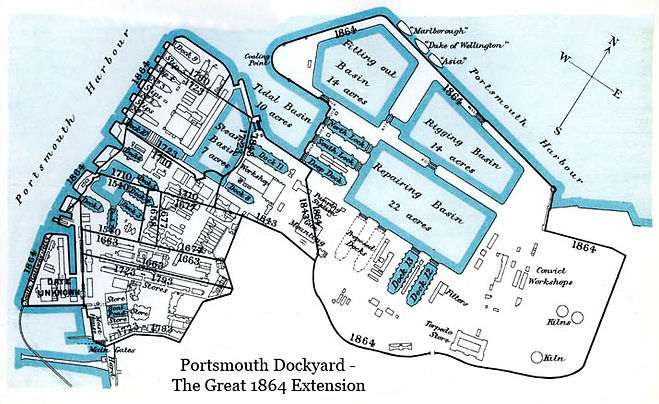
At the age of 16 when the 1871 census was taken, William was already a shipwright’s apprentice in the Dockyard. The shipwrights were at the top of the tree in the Dockyard, so he must have been pretty bright to have secured an apprenticeship. There were exams to be taken for acceptance as an apprentice, and then you got to choose which trade you wanted, according to your marks - that is, those with the highest marks had first choice. As the shipwrights were top of the tree, it is likely that only the brightest got these apprenticeships. I do not know at what age one became an apprentice, but at that time an apprenticeship lasted seven years. The apprentice attended the Dockyard School which had a very rigorous curriculum. So rigorous in fact that often only 15 shipwright apprentices were left at the end of the four years of school. There were examinations and tests every year, so he would have had to be bright and also skilled. This excerpt from the article on the Dockyard School at the Harbour Trust’s site, shows how comprehensive and, indeed challenging, the curriculum was. In fact the qualification has been compared to a degree in Engineering.
“The subjects taken in the entrance examination were: Mathematics (2), Arithmetic, Science (2), History and Geography (2), English (3) - Composition, Handwriting and Literature) and Drawing. Such was the popularity of Dockyard apprenticeships that one or two private schools were set up in Portsmouth whose primary purpose was to get boys through the apprentice entrance examination.” (Did William go to one of these I wonder?)
Attendance at the Dockyard School (which was in a building within the Dockyard at Portsmouth) was compulsory for the first 3 years and the time allocated for attendance was 2 afternoons and 3 evenings for the Upper School (the ‘top’ trades) and 1 afternoon and 3 evenings for the Lower School (the ‘lesser’ trades). The subjects then being taught in the Dockyard schools were: Geometry, Arithmetic and Mensuration, English Grammar, Algebra, Physics and Chemistry, Geography, History, Trigonometry, French, Mechanics, Hydrostatics, Conic Sections, Differential and Integral Calculus, Practical Shipbuilding and Laying-off. The training in professional subjects was usually undertaken by members of the dockyard staff.” (Interesting that they would have learnt French and, presumably advanced, English Grammar.)
William worked there for all of his working life. He began as an apprentice shipwright, but sometime in his thirties changed to being a draughtsman. He was still working there in 1911, but by the time he died in 1921 at the age of 66 he had retired. No doubt if and when I get his employment records I will be able to explain the reason for the change from shipwright to draughtsman more clearly. At the moment I can only suppose, that either he didn’t enjoy being a shipwright, a draughtsman got paid more or had more prestige, or he had an accident or some kind of medical problem that stopped him from carrying out the more physical work of the shipwright.
Since the 1881 census has his job listed as shipwright one can only assume that he passed all his examinations and qualified, as those who failed the final exams, even if only by a few marks had nothing. I am guessing, but since the apprenticeships at this time were for seven years, and since the school course seems to have been for four, then there must have been three years either before or after (or a mix of both) the schooling.
The Royal Naval Dockyard at Portsmouth is a little town in itself. Indeed looking at the map on the previous page, Portsmouth was pretty much the Dockyard with a few streets around it to house the workers. The historical section of it is now open to the public and houses museums, displays, HMS Victory (Nelson’s flagship), but it is also still a working dockyard where navy ships are built and maintained and restoration work is carried out. In William’s day a large proportion of the population would have been employed there. Even in 1868 the date of this National Gazeteer extract, it was huge:
“The royal dockyard at Portsea covers a space of 120 acres, and is the largest in the kingdom. The frontage on the harbour is nearly three quarters of a mile. It contains stores of every requisite for the navy, factories for sails, ropes, and blocks, copper-sheathing foundry, anchor forge, wood and iron mills, joiners' shops, &c. A basin of 33,000 square yards, with four dry docks; a double dock for frigates; six building slips; a basin for steamers, 3,000 feet in length, opened by the Queen in 1848; a graving-dock, and one or two other smaller ones. The dockyard also includes the Royal Naval College, and school of architecture, a chapel, guard and pay-houses, offices of the ordnance and engineers' services, an observatory, and the residences of the admiral and port admiral. Beyond the Common Hard, where timber is kept for seasoning, is the gun-wharf and ordnance stores, and an armoury for small arms used in the navy.”
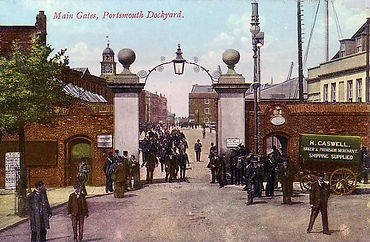
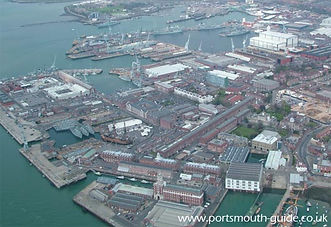




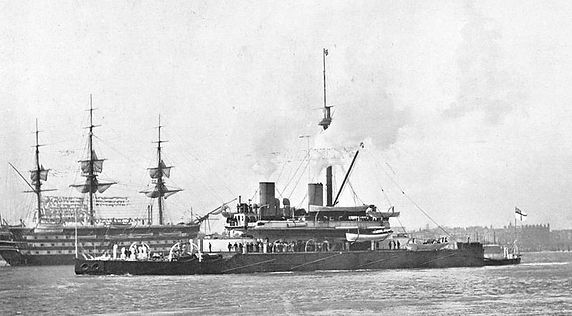
By the time he was working, the days of sail were over and the steamship held sway. Wood had also given way to iron, and so a whole set of new skills were needed. The period between 1871 and the 1890s, although it saw continuing production, and technological innovation, was also a period of relative peace in the world, and so there was some decline in the number of workers at the yard. Maybe this was why he changed to becoming a draughtsman.
I had originally thought that draughtsmen might have been viewed as superior to shipwrights, seeing as how it is a ‘white collar’ job, but this is absolutely not the case. Shipwrights were very definitely the top of the tree and controlled everything. So why the move to draughtsman? Whatever the reason, William would have had to pass yet more exams, and undergone more training, as designing ships or bits of ships, is very different to building them.
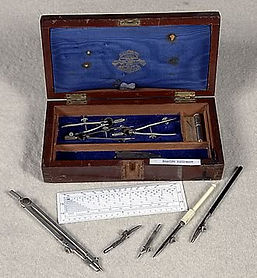

Links
Portsmouth Royal Dockyard Historical Trust- a site that presents all sorts of information about the history of the dockyard.
Dockyard School - part of the above site, about the training of apprentices there
Population and Society in Western European Port Cities 1650-1939 - edited by Richard Lawton and Robert Lee - a Google book with an extensive chapter on Portsmouth.
Links
Working life
William John Richards


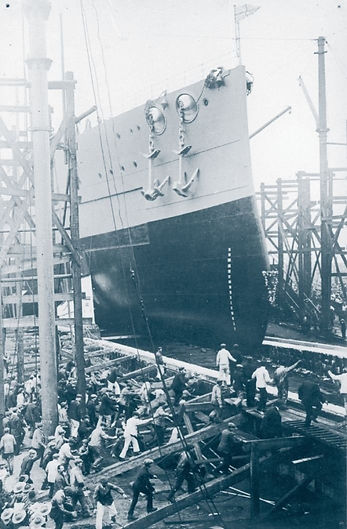
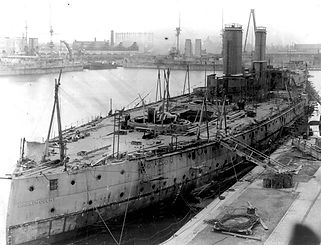
In the period from the 1890s to the first world war though, there was a huge increase in production with a new battleship being launched every year. The ships themselves were also technologically advanced with the Dreadnought class being the most famous. The ships were so large indeed that there had to be yet another redevelopment of the Dockyard, with three of the earlier construction basins being combined into one. So there would have been plenty of work. Of course, the scale of these boats was so large, that one didn’t design a whole ship - one developed a speciality - propellors, funnels, etc. The Dockyard was divided into three main departments - shipwrights, engineering and electrical and each of these departments was also subdivided. I think that William worked in what was known as the Constructive Department, (the shipwrights?) which created the blueprints for the overall design of the ship. Within this there would have been sections for the different kind of ships and also for different parts.
I have said that the Dockyard was a town within a town, and as such it had its own social structure too. There were outings and clubs and unions, churches and maybe even pubs, though I suspect that these were outside the Dockyard precinct. Sport was a big thing apparently and the departments competed with each other in a huge variety of sports. I do not know whether William participated in any of this, or whether families were involved.
At its peak the Dockyard employed 22,00 people - the peak was probably around the time of one or other or both of the world wars, is my guess.
I imagine that the Dockyard, sort of became your life. You would have worked with the same people for a huge number of years, socialised with them - they would almost be family, so it would have been quite a shock to no longer be working there. I do not know at what age William retired. If it was 65 he was dead within a year.